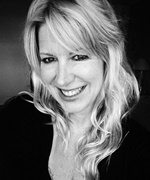 It all seems to date back to a 19th-century French book. It's not all
rainbows and butterflies, you know. Or rainbows and unicorns. Or
butterflies and unicorns. But when it comes to referring to impossibly
perfect conditions where everyone's happy and nothing goes wrong, we're
living in a golden age of RBUs.
It all seems to date back to a 19th-century French book. It's not all
rainbows and butterflies, you know. Or rainbows and unicorns. Or
butterflies and unicorns. But when it comes to referring to impossibly
perfect conditions where everyone's happy and nothing goes wrong, we're
living in a golden age of RBUs.
A
Google News search for just the past week brings up almost 500 hits for
rainbows and unicorns or rainbows and butterflies. On this Google Ngram
Viewer graph below, you can see that both expressions, as well as
butterflies and rainbows, are on the rise, with rainbows and unicorns in
particular shooting steadily up since 2003.
Rainbows and
butterflies came together first. The earliest attestation I've found is
from an 1864 book by Jenny d' Hericourt (translated from French) titled A Woman's Philosophy of Woman, where on pages 191 and 192 we read:
...if
[women] were free and happy they would be less eager for illusions and
cajoleries and it would no longer be necessary in writing to them to
place rainbows and butterflies' wings under contribution…
It's
butterfly wings instead of entire butterflies, but the sentiment seems
the same. The phrase also occurs in William S. Lord's 1897 poem Jingle
and Jangle, which lists some things that the pleasant sound of a
jingling bell brings to mind:
Sunshine and sugar and honey and bees
Rainbows and butterflies wings,
Bird songs and brook songs and wide spreading trees,
Of joy little Jingle bell sings.
Butterflies
and rainbows also appears in the late 19th century, in an 1896
editorial that scornfully refers to the idea of moving the U.S. to a
dual gold-and-silver standard as "chasing free silver butterflies and
rainbows."
Pairings of rainbows with butterflies (not just
butterflies' wings) continue to appear on into the 20th century, often
as the objects of chasing, before the steady rise in the graph that
began in the 1970s. Since then, "rainbows and butterflies" has been the
title of a 1983 song by Billy Swan, the title of two books of poetry,
and part of the lyrics of Maroon 5's 2005 song "She Will Be Loved."
In
the 1980s, unicorns made their entry, at around the same time that
Hasbro began marketing its My Little Pony line of toys, which included
both a Rainbow Ponies and a Unicorn Ponies collection. However, I can't
claim that this event was the you-got-your-chocolate-in-my-peanut-butter
moment for rainbows and unicorns; it may be that an increasing
popularity of unicorns was responsible for both phenomena. A 2010 post
on the Zandl Marketing Group's blog puts the increasing popularity of
rainbows and unicorns in the context of the mainstreaming of gay
cultural symbols. In any case, in the mid-80s we begin to see examples
like this one from 1984:
The only calendars left in the stores just before the holidays are those with unicorns and rainbows on them.
Although
unicorns arrived late to the party, they've hit it off so well with
rainbows that for some, it's not enough just to have the two words
conjoined by and. In the past few years, unicorns that fart rainbows
seem to have become their own meme. For an even tighter linkage, there's
Lady Rainicorn, a half-rainbow, half-unicorn character in Cartoon
Network's Adventure Time series.
These days, unicorns sometimes
get together with butterflies to the exclusion of rainbows. There aren't
enough examples to have been captured in the Google Ngram corpus, but
Google Books has a 1996 example of butterflies and unicorns in
Skywriting, by Margarita Engle:
I would take the alligators out of its rivers and the scorpions out of its soil, replacing them with butterflies and unicorns.
In the other order, "Unicorns and Butterflies" is the name of not one but two blogs, each begun sometime in the last two years.
Some
people prefer not to choose between unicorns and butterflies with their
rainbows. The "Rainbows and Butterflies and Unicorns" Facebook page
doesn't. And in the 2008 movie Horton Hears a Who, a child character
takes that earlier scatological unicorn-rainbow connection, reverses its
direction, and brings in the butterflies, telling of an imaginary world
where "there are unicorns who eat rainbows and poop butterflies!"
Other
words to appear in RBU contexts include smiles, sunshine, balloons,
bunnies, kittens, and lollipops. In a 1981 monologue, Steve Martin
declares that he believes in "rainbows and puppy dogs and fairy tales."
Three-syllable nouns, it seems, tend to be favored for rainbow
collocations; specifically, three-syllable nouns consisting of an
unstressed syllable sandwiched between two stressed syllables:
BUTTerflies, Unicorns, LOLlipops, PUPpydogs, FAIRy tales. This kind of
three-syllable string is known in poetry circles as a cretic.
So
if you'd like to enrich the language with some new rainbow-cretic
collocations, I offer my suggestion: Rainbows and boogeymen and heart
attacks.
Brought to you by NetLingo: Improve Your Internet IQ
Subscribe to the NetLingo Blog via Email or RSS here!












